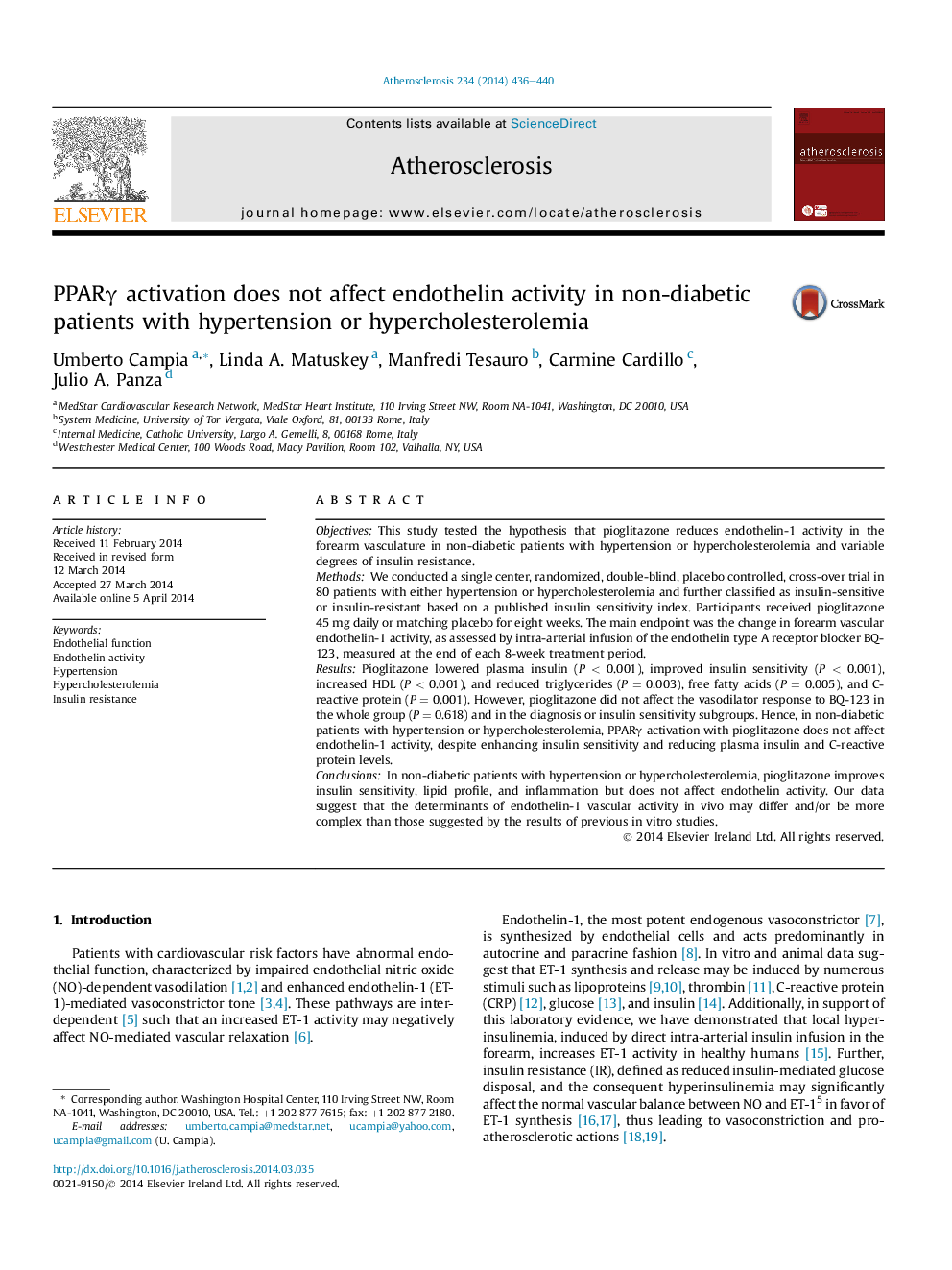| Article ID | Journal | Published Year | Pages | File Type |
|---|---|---|---|---|
| 5946798 | Atherosclerosis | 2014 | 5 Pages |
â¢PPARγ activation decreases endothelial endothelin-1 production in vitro.â¢We assessed the effects of PPARγ activation on endothelin activity in non diabetics.â¢PPARγ activation did not decrease endothelin activity in vivo in non diabetics.â¢The regulation of the endothelin system in vivo may differ from in vitro data.
ObjectivesThis study tested the hypothesis that pioglitazone reduces endothelin-1 activity in the forearm vasculature in non-diabetic patients with hypertension or hypercholesterolemia and variable degrees of insulin resistance.MethodsWe conducted a single center, randomized, double-blind, placebo controlled, cross-over trial in 80 patients with either hypertension or hypercholesterolemia and further classified as insulin-sensitive or insulin-resistant based on a published insulin sensitivity index. Participants received pioglitazone 45 mg daily or matching placebo for eight weeks. The main endpoint was the change in forearm vascular endothelin-1 activity, as assessed by intra-arterial infusion of the endothelin type A receptor blocker BQ-123, measured at the end of each 8-week treatment period.ResultsPioglitazone lowered plasma insulin (P < 0.001), improved insulin sensitivity (P < 0.001), increased HDL (P < 0.001), and reduced triglycerides (P = 0.003), free fatty acids (P = 0.005), and C-reactive protein (P = 0.001). However, pioglitazone did not affect the vasodilator response to BQ-123 in the whole group (P = 0.618) and in the diagnosis or insulin sensitivity subgroups. Hence, in non-diabetic patients with hypertension or hypercholesterolemia, PPARγ activation with pioglitazone does not affect endothelin-1 activity, despite enhancing insulin sensitivity and reducing plasma insulin and C-reactive protein levels.ConclusionsIn non-diabetic patients with hypertension or hypercholesterolemia, pioglitazone improves insulin sensitivity, lipid profile, and inflammation but does not affect endothelin activity. Our data suggest that the determinants of endothelin-1 vascular activity in vivo may differ and/or be more complex than those suggested by the results of previous in vitro studies.
